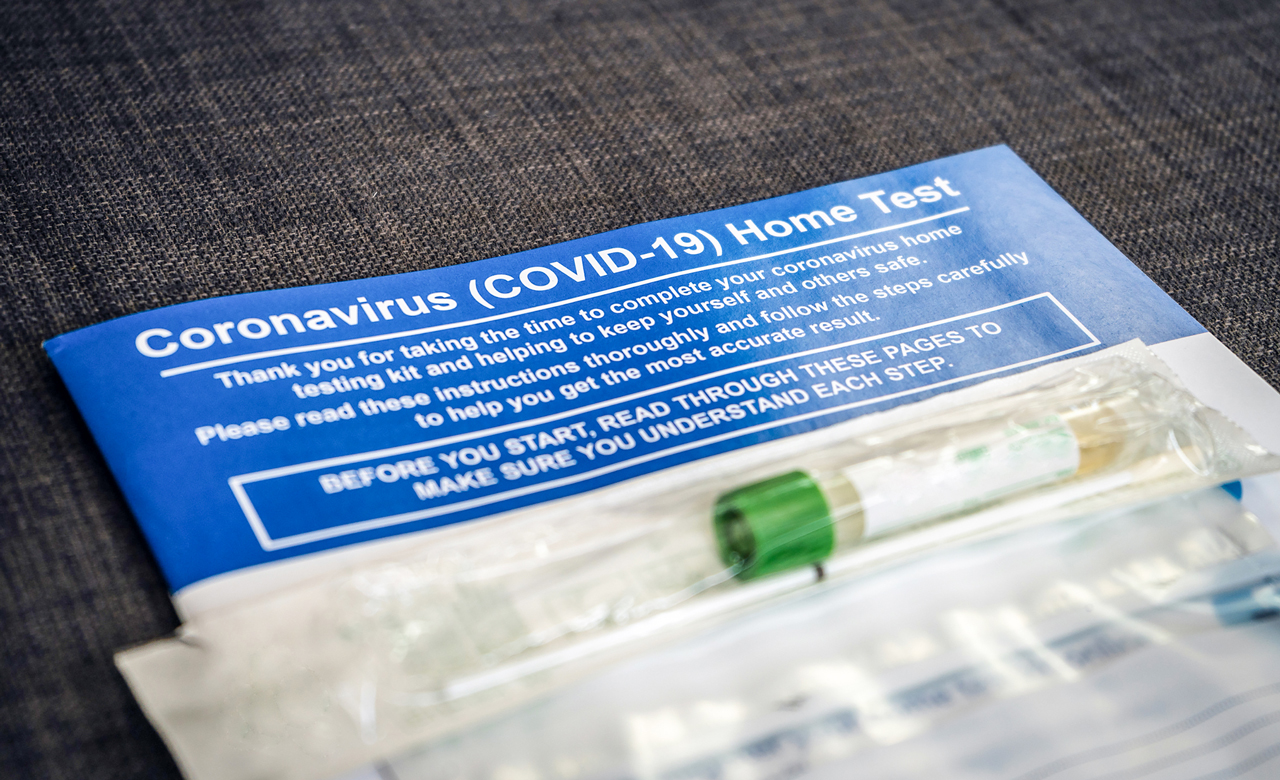Clarissa Chan, PharmD

New and relatively low-priced at-home COVID-19 tests are now available at local pharmacies and can also be shipped directly to a patient’s home. Pharmacists continue to have a role in helping their communities understand these new tests on the market—whether by familiarizing themselves with the sensitivity of the tests or counseling patients on appropriate testing technique to obtain the most accurate results possible.
Specimen type
For COVID-19 tests, there are two types of nasal specimens collected via an anterior nasal swab—no more than three-quarters of an inch into the nose, or a nasal mid-turbinate swab inserted straight back into the nose less than one inch or until resistance is felt.
Another type of COVID-19 test requires a saliva specimen.
Preparation for specimen collection
To avoid contamination, anyone performing a COVID-19 test should wash their hands thoroughly with soap and warm water and disinfect the surface where the test will be performed.
The test kit should be stored in a well-controlled environment as directed by the manufacturer, and the user should make sure it’s not expired, damaged, or discolored.
Tips for performing the test
For the most accurate test results, pharmacists should instruct patients to follow directions exactly as written and in the order they appear.
The soft or sample collection end of a swab should not be touched by hands or anything else. When collecting the sample, the swab should be gently pressed against the inside of the nostril and slowly rotated to collect as much nasal discharge as possible. Patients should read and record test results as instructed by the test instructions.
After recording the results, patients should dispose of test collection samples and test devices. They should not be reused.
Manufacturers may also include other helpful resources, such as quick reference guides and informational videos to help patients understand how to perform the test accurately.
Negative or inconclusive results
Patients who receive a negative test result should be aware that it could be a false negative, meaning the sample may have been collected too early and the test could show a positive result in later stages of the infection. Patients should consult their health care provider to discuss their symptoms and whether they should be retested.
If a test shows an error or an invalid or unclear result, the test kit may be defective. The patient can then contact the manufacturer to troubleshoot the issue. Another reason for an inconclusive result is user error, such as incorrect collection of the specimen.
Positive results
Patients should notify their health care provider if they test positive for COVID-19 and stay in contact with them throughout the duration of their illness. According to CDC recommendations, infected patients should isolate themselves to avoid spreading the virus. They should monitor their symptoms, and if they have an emergent warning sign like trouble breathing, they should seek immediate medical attention.
Patients who have been near or exposed to an infected person and have COVID-19 symptoms should also quarantine themselves. People can be infectious 48 hours before symptoms appear and before tests show positive results. To limit spread of the virus, patients should notify any recent individuals with whom they have been in contact.
Regardless of the test results, patients should be encouraged to review their results and discuss their symptoms with their health care provider.
Visit CDC’s website at apha.us/CDCCOVIDtesting to learn more about at-home COVID-19 tests and CDC recommendations.